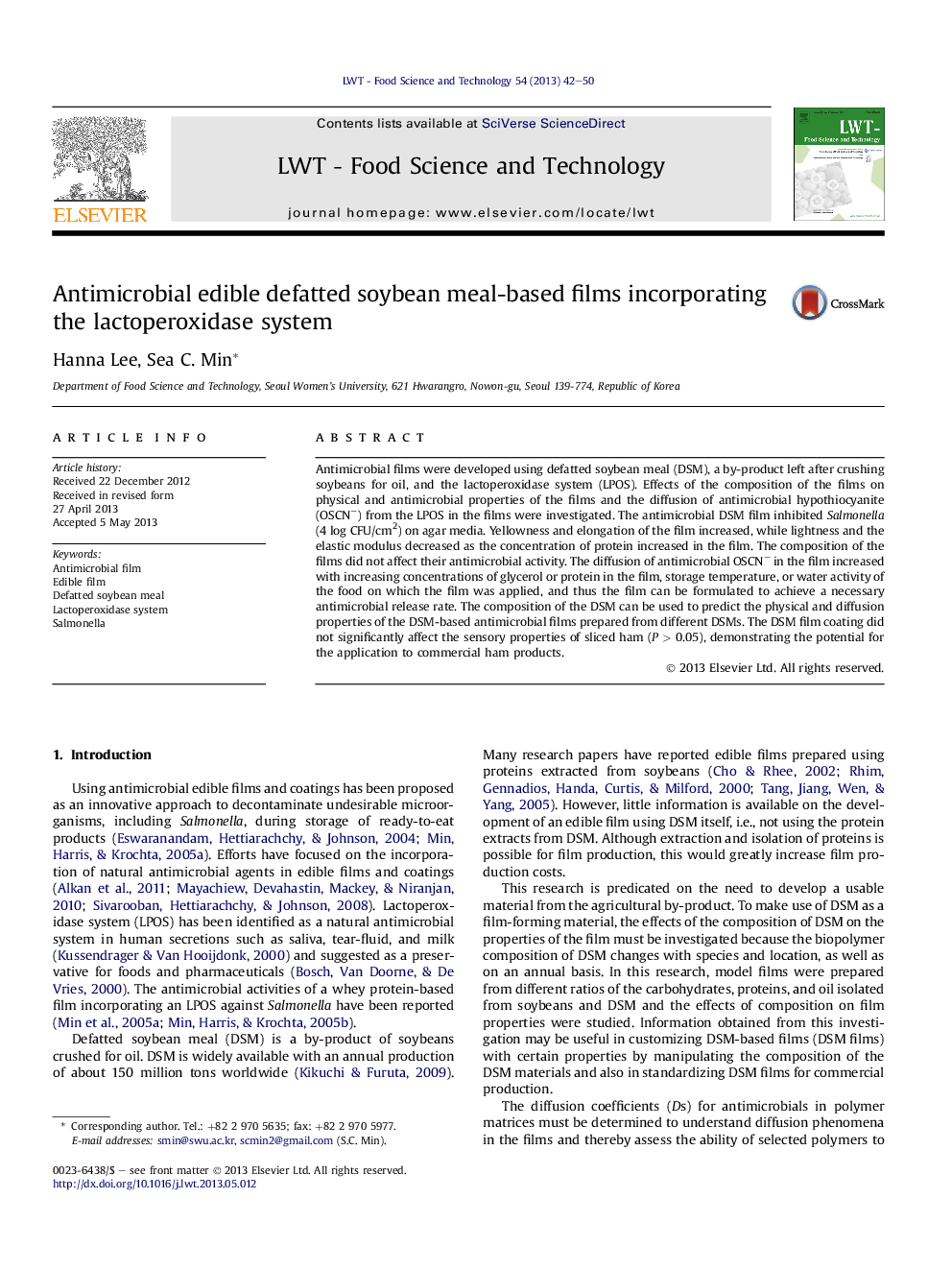| کد مقاله | کد نشریه | سال انتشار | مقاله انگلیسی | نسخه تمام متن |
|---|---|---|---|---|
| 6404162 | 1330900 | 2013 | 9 صفحه PDF | دانلود رایگان |
- Antimicrobial films were developed using a defatted soybean meal (DSM) by-product.
- DSM composition affected the physical and diffusion properties of the films.
- The film can be formulated to achieve a necessary antimicrobial diffusion.
- Storage temperature and water activity affected antimicrobial diffusion in films.
- The DSM film coating did not negatively affect the sensory properties of ham.
Antimicrobial films were developed using defatted soybean meal (DSM), a by-product left after crushing soybeans for oil, and the lactoperoxidase system (LPOS). Effects of the composition of the films on physical and antimicrobial properties of the films and the diffusion of antimicrobial hypothiocyanite (OSCNâ) from the LPOS in the films were investigated. The antimicrobial DSM film inhibited Salmonella (4 log CFU/cm2) on agar media. Yellowness and elongation of the film increased, while lightness and the elastic modulus decreased as the concentration of protein increased in the film. The composition of the films did not affect their antimicrobial activity. The diffusion of antimicrobial OSCNâ in the film increased with increasing concentrations of glycerol or protein in the film, storage temperature, or water activity of the food on which the film was applied, and thus the film can be formulated to achieve a necessary antimicrobial release rate. The composition of the DSM can be used to predict the physical and diffusion properties of the DSM-based antimicrobial films prepared from different DSMs. The DSM film coating did not significantly affect the sensory properties of sliced ham (P > 0.05), demonstrating the potential for the application to commercial ham products.
Journal: LWT - Food Science and Technology - Volume 54, Issue 1, November 2013, Pages 42-50
